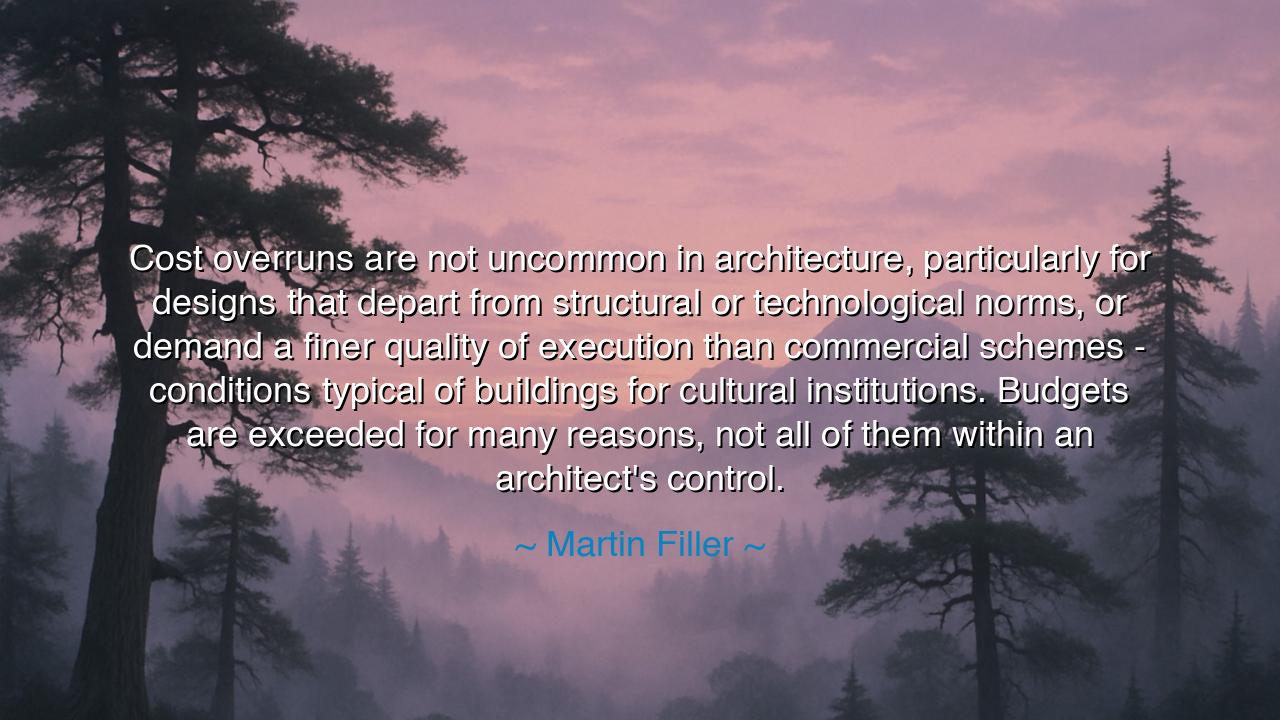
Cost overruns are not uncommon in architecture, particularly for
Cost overruns are not uncommon in architecture, particularly for designs that depart from structural or technological norms, or demand a finer quality of execution than commercial schemes - conditions typical of buildings for cultural institutions. Budgets are exceeded for many reasons, not all of them within an architect's control.






Yes — that quote is correctly attributed to Martin Filler, an American architectural critic and historian, known for his writings on contemporary architecture and design.
“Cost overruns are not uncommon in architecture, particularly for designs that depart from structural or technological norms, or demand a finer quality of execution than commercial schemes - conditions typical of buildings for cultural institutions. Budgets are exceeded for many reasons, not all of them within an architect's control.”
— Martin Filler
Context and Background
In this quote, Martin Filler reflects on the challenges architects face when working on cultural buildings, such as museums, theaters, and other public institutions. These types of buildings often require innovative designs and unique construction techniques that can depart from standard practices. While such designs are often necessary to create buildings that meet specific aesthetic and functional goals, they frequently lead to cost overruns. Filler points out that these overruns are sometimes unavoidable and can stem from various factors beyond an architect's control, such as unexpected structural complexities, material shortages, or the need for specialized labor.
Interpretation
-
“Cost overruns are not uncommon in architecture” — Filler acknowledges that exceeding the original budget is a common occurrence in the field of architecture.
-
“Particularly for designs that depart from structural or technological norms” — he highlights that innovative or unconventional designs, especially those that challenge typical building methods, are more likely to result in cost overruns.
-
“Demand a finer quality of execution than commercial schemes” — cultural buildings often require higher standards of craftsmanship and attention to detail compared to more standard commercial projects, adding to costs.
-
“Budgets are exceeded for many reasons, not all of them within an architect's control” — Filler points out that while architects are responsible for the design, many other factors (e.g., construction delays, changes in material costs, unforeseen technical challenges) can contribute to budget increases.
Summary
Martin Filler’s quote provides a realistic perspective on the challenges architects face when designing buildings for cultural institutions, such as museums or performance spaces. These projects often involve innovative or non-standard design elements, which can result in cost overruns due to factors like the complexity of the design, specialized materials, and increased attention to detail. Filler emphasizes that not all of these challenges are within the architect's control, and such projects can be financially unpredictable despite careful planning.






AAdministratorAdministrator
Welcome, honored guests. Please leave a comment, we will respond soon